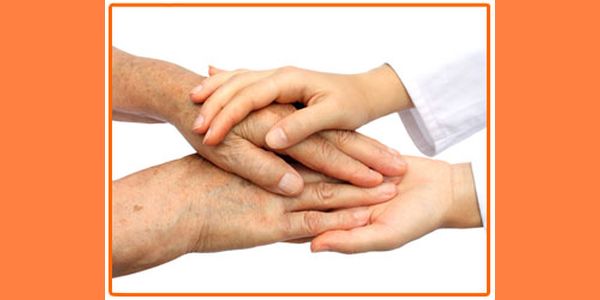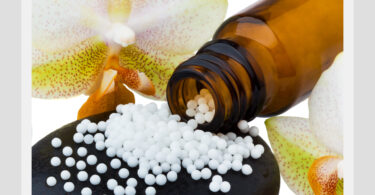Abstract
It is now considered that up to 60% of infertility is actually due to the male partner.1 From a holistic point of view, understanding the various elements of causes, and having a plan to address them is extremely useful for the homeopath. This article provides an overall strategy and some suggestions to assist the male partner of a couple who want to have children. Of course, the female partner may also often need treatment as well.
Introduction
It is commonly accepted in the world of Western conventional medicine that lifestyle and nutrition have a key impact on the quality of se-men and can be at least partially improved with some changes, and also supplementation.
Medical doctors will often be less inclined to look into two other major factors behind poor se-men quality: the first one is body toxicity, which can impact se-men production, and the second is emotional causes, which can cause issues such as impotence, and also disrupt significantly the body’s vital force. Homeopaths are very well equipped to help here, especially if they are also able to offer sound nutritional advice.
Semen Analysis briefly explained
When a couple seeks help for fertility, it is important to get the medical history and a recent sperm and se-men test for the male partner. This will help set metrics and measure improvement. A se-men analysis evaluates certain characteristics of a male’s se-men and the sperm contained in the semen. Its key parameters are:
Sperm count:
Sperm count measures the concentration of sperm in a man’s ejaculate. It is measured in millions of sperm per millilitre. Over 15 million sperm per ml is considered normal (WHO in 2010), while older definitions stated 20 million. The average sperm count today is around 60 million per ml in the Western world, having decreased by 1-2% per year from a substantially higher number decades ago2. Successful pregnancy increases with a higher sperm count. With everything else equal, a reading of 20 million will increase a chance of successful pregnancy by 20%, while 30 million will increase the odds by 40%. Above 50 million, the successful pregnancy rate link is flatter. This demonstrates that a male should aim at a sperm count of about 50-60 million per millilitre. Any holistic treatment should aim primarily at increasing the sperm count to that range.
Total sperm count
Total sperm count, or total sperm number, is the total number of spermatozoa in the entire ejaculate. It is the sperm count multiplied by the volume of semen, which should be at least 2 ml.
Motility
The motility of the sperm shows good forward movement, and is similar to the quality of the sperm. Not all sperm is good quality, and an average of 50-60% of observed sperm with good quality is considered good by conventional medicine (Cooper TG, Noonan E, von Eckardstein S, et al. (2010) ( World Health Organization reference values for human se-men characteristics). A man can have a high total number of sperm, but still have bad quality, because too few of them are motile. This will reduce the chance of successful procreation. This is the second key metric, and should be as high as possible and at least 50%.
Morphology
The morphology of the sperm is also evaluated. The WHO criteria in 2010 was that a sample was normal if 4% or more of the observed sperm have normal morphology. Morphology is a predictor of success in fertilizing oocytes during in vitro fertilization.
Sperm Volume
The volume of the sample is measured. Conventionally, volumes between 1.5 ml and 6.5 ml are considered normal. Low volume may indicate partial or complete blockage of the seminal vesicles, or that the man was born without seminal vesicles.
Fructose level
The level of fructose in the se-men is also usually measured. Absence of fructose may indicate a problem with the seminal vesicles.
pH
The pH of the sample is measured as well. Good sperm should be slightly alkaline, with a normal range of 7.2-7.8. A pH value outside of the normal range is harmful to sperm. Acidic ejaculate (lower pH value) may indicate one or both of the seminal vesicles are blocked. A basic ejaculate (higher pH value) may indicate an infection.
Other data are sometimes measured, such as:
– liquefaction: the process when the gel formed by proteins from the seminal vesicles is broken up and the se-men becomes more liquid.
– MOT: measures how many million sperm cells per ml are highly motile.
– Total motile spermatozoa: combination of sperm count, motility and volume, measuring how many million sperm cells in an entire ejaculate are motile.
– White blood cells: a high level of white blood cells (over 1 million per ml) may indicate an infection.
Important Sperm Test Metrics and Nutritional advice
In most cases, poor sperm quality is the primary reason for male infertility. A high sperm count (over 50-60 million) and a high motility rate (> 50%) should then be the first elements to address in order to help a male increase the chances of fertilisation. I ask all male patients to have a sperm test at the first consultation, and then to do another one after 4 months of treatment, as this is about the time the sperm takes to mature.
When people are told the importance of these two metrics in procreation, and that they can easily improve them with lifestyle changes, they are usually open and eager to make the necessary changes. Diet is the main part in them.
Two important elements for good sperm are essential fats (making about 80% of the sperm mass) and zinc (about 15% of the sperm mass). The daily usual dosage, I suggest is 15 mg of zinc supplementation and 100mg fish oil, with 1,000 mg vegetable oil. I also add 1,000 mg Vitamin C as studies has shown to significantly improve sperm quality.
Supplements should not be a substitution for a better diet and lifestyle, so ask people to improve their overall diet. Good nutrition should include a significant intake of water (between one and two litres daily for most people), and also food rich in good quality fat and zinc, as supplements are better absorbed with food rich in them. This includes vegetables, fish, seeds and unrefined vegetable oil, the best being flaxseed, sesame, sunflower and pumpkin. Good sources of zinc are oysters, wholemeal and rye bread, green peppers, potatoes, eggs, chicken and apples.
This is often enough to improve se-men and sperm quantity (total sperm count). However, in my experience, supplementation only does not really help in improving the sperm quality metrics, such as motility and morphology. So if these are originally extremely low, homeopathy is a very good option.
Also, nutritional advice may need to be fine-tuned if a patient has an extremely poor diet. Likewise, a heavy smoker or drinker or someone on chronic medications may need some extra supplementations. B-complex or multi-vitamins may be required to assist absorption of the zinc and good quality fat. A specific homeopathic support for such a condition can also be helpful.
In the UK especially, it is also important to ensure that the patient reduces his intake of “nutrients’ robbers”. These include highly refined foods, man-made fats, sugar, coffee, alcohol and toxins. For example, it is estimated that smoking reduces sperm concentration by 24% while alcohol is toxic to the male reproductive tract. 3.
Addressing Emotional Issues
Most homeopaths will develop a mental and holistic picture of their patients. If sperm levels or quality are not optimal, this is obviously bound to impact a man’s self-esteem and increase his sense of guilt.
Elements that are important to look at include:
– Any emotional issues directly impacting the sexual act: guilt or anxiety can for example, increase impotence or a reduced sex drive. It is important to be as investigative as possible. Sometimes, while there are no obvious issues in the performance of the sexual act, I have found a cases when the man would not cooperate in making love at the right time (measured a few days around ovulation). In one case, it was as subtle as having an argument or work commitments..
– Also help on any emotional issues, which would reduce lifestyle quality, such as fomenting alcohol addiction or inducing poor sleep.
– I have found that the male hormonal system seems more resilient to stress than the female system. For this reason, depression or long-term chronic stress are less likely to be a major blocking point for male fertility. Having said that, reminding both partners to have good quality time together or relaxed evenings is in my view especially important to increase sperm count. First, it bonds the couple and may help the male partner embrace the process. Secondly, I am convinced that the hectic urban modern workaholic lifestyle that most people have nowadays, can at least partly explain the overall drop of sperm quantity and quality in the Western world.
In my experience, prescribing constitutionally or on the mental picture can help a lot the patient’ sense of self-esteem and also improve se-men quality.
Importance of Sources Toxicity for Male Patients
The other area to look at is significant sources of toxicity, which are known to impact semen. While nutrition can partly offset them, I tend to use a homeopathic detoxification protocol for around 30% of male patients with low se-men results. In their cases, supplements and nutrition improve the sperm count but does not improve the sperm quality. The most common issues to keep in mind are toxicity and low-grade infection. Both can impact sperm production:
– Use of medical drugs that have a detrimental effect on testes: the major hormonal disrupters are steroids, anti-depressants and pain killers. However, any long-term use of medications should be considered. Checking the list of side-effects may help to confirm if a medication can have an impact. For example, the drug susphasalazine, used in the treatment of ulcerative colitis, is known to reduce sperm counts.
– Use of recreational drugs: the ones to especially keep in mind are marijuana and opioids (heroin).
– Exposure to radiation
– Work hazards such as dyes, solvents, weed killers, mercury or lead. If the patient works in close proximity to these chemicals, they will have to be considered a factor. As these are major hormonal disrupters, if they show in the medical history, even long ago, then this may need to be addressed.
– History of mumps and sexually transmitted diseases: even if the client is asymptomatic, this should be flagged if this is in the case.
– Dental History (mercury fillings and root canals): mercury and metals in generals are known toxins and hormonal disrupters. The health-issues of root canals have come to me over last year and is much less publicised. A significant portion of root canals tend to get infected (staphylococcus primarily). The infection is painless as the root treatment has destroyed all the nerves, and the infection can overload the body with an “internal” source of toxicity. I had a very healthy male patients who had a high sperm count but very low sperm quality, despite being in good health. All symptoms were pointing to an internal infection and his dental work. His sperm quality improved significantly after the removal of the root canals.
Short Therapeutics for Male Fertility
Impotence
Agnus Castus: Impotency, infertility, cold penis, premature old age, indicated after sexual overindulgence, masturbation or venereal disease. Desire without power. Emissions without any sex drive. Poor memory. Regrets past mistakes.
Baryta Carb: diminished desire, premature ejaculation, emissions at night or after intercourse. Testes atrophied, retracted. Erections in morning, absent or delayed at other times.
Conium: increased desired but decreased power. Brief or feeble erections. Effects of prolonged abstinence, of loss of loved ones, or excessive indulgence. Emissions from merely touching, loss of control. Sadness after ejaculation
Lycopodium: chronic impotence. Erections incomplete. Emissions too quick or too slow. Excessive or weak desire. Repulsed by sex. Lack of confidence, but egoistic, dictatorial and angered. Digestive weakness with bloating, hunger.
Phosphoricum Acidum: impotence, hypersensitive penis. Premature ejaculation. Loss of desire. Emissions at stools or urination, in sleep. Erections without any desire. Masturbation with guilt. Apathy, indifference.
Selenium: sexual thoughts but no ability. Incomplete erections, quick or delayed emission. Weak and irritable after sex. Easy fatigue. Hair loss. Loss of se-men while sitting, at stool in sleep. Averse to company of friends, forgetful.
Other suggestions: Caladium, Calcarea Carbonica, Calcarea Sulphurica, China Officinalis, Medorrhinum, Phosphorus, Nux Vomica, Sepia Succus…
Infertility, Low Sperm Count
Agnus Castus, Carcinosin, Radium Bromatum, Sulfanilamide, X-Ray
Addressing Toxicity
Using a tautopathic approach (= prescribing the toxin in homeopathic potency) is usually enough, but removing the source of toxicity can be necessary if this source is materially significant. I personally prescribe in the low-potency range, starting at 6C or 9C and increasing by 3C each month.
Constitutional and Complex support to boost sperm production
When nutrition has been addressed and there is little source of toxicity or infection, constitutional prescribing can be successful in increasing sperm quality in a shorter time.
Notes
- M. Fox, “Oestrogen Mimics”, Green Network News – March 1994.
- “The sperm count has been decreasing steadily for many years in Western industrialized countries: Is there an endocrine basis for this decrease?” The Internet Journal of Urology TM. ISSN: 1528-839)
- DM de Kretser, “declining sperm counts”, British Medical Journal, 1996, vol. 312.
Bibliography
P. Holford & S. Lawson “Optimum Nutrition before, during and after pregnancy”
- Hershoff, Homeopathic Remedies
- Murphy, Homeopathic Clinical Repertory, 3rd Edition
Hpathy, Online Professional Homeopathic Magazine, various articles
College of Practical Homeopathy, Course Notes







I find Mr clerc’s article on fertility very useful and practical. The details given are comprehensive,completeand easy to understand and easy to apply by patients and trainee homeopaths alike.